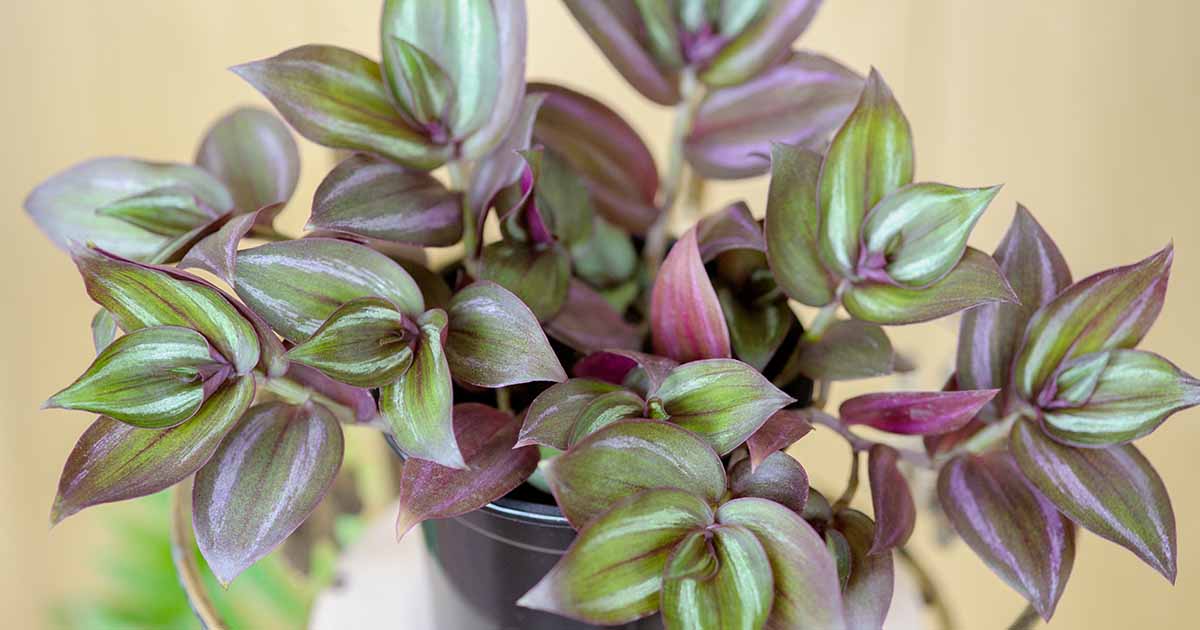
Spiderwort, also known by its scientific name Tradescantia, is a captivating plant that has captured the attention of gardeners and nature enthusiasts alike. With its elegant appearance and unique characteristics, it is no wonder why spiderwort is often a popular choice for both indoor and outdoor cultivation.
In this article, we will explore 12 fascinating facts about spiderwort that will not only pique your curiosity but also deepen your appreciation for this remarkable plant. From its vibrant blooms to its medicinal properties, spiderwort is truly a botanical wonder worth exploring. So, let’s dive into the enchanting world of spiderwort and uncover the secrets of this extraordinary plant.
Key Takeaways:
- Spiderwort, with its spider-like flowers and vibrant colors, attracts pollinators and symbolizes hope and rebirth, making it a captivating addition to any garden.
- Spiderwort’s hardy nature, edible leaves, and medicinal properties make it a low-maintenance, versatile plant that thrives in various environments and inspires artists and poets.
Spiderwort gets its name from its spider-like flowers.
True to its name, Spiderwort features delicate flowers that resemble spiders, with three petals and six stamens that stretch out like spider legs.
Spiderwort comes in various striking colors.
From deep blues and purples to pinks, whites, and even bicolor varieties, Spiderwort offers a stunning array of colorful options to brighten up any garden.
Spiderwort is a hardy and resilient plant.
Spiderwort is known for its ability to adapt and thrive in various environments, making it an excellent choice for both novice and experienced gardeners.
Spiderwort is native to North and South America.
These beautiful flowers can be found growing naturally in the wild throughout the Americas, from Canada to Argentina.
Spiderwort attracts pollinators.
Bees, butterflies, and hummingbirds are drawn to Spiderwort’s nectar-rich flowers, making it a valuable addition to any pollinator-friendly garden.
Spiderwort is easy to propagate.
Spiderwort can be effortlessly propagated by dividing the clumps of plants or by taking stem cuttings, making it a popular choice for gardeners looking to expand their collection.
Spiderwort has medicinal properties.
Traditionally, Spiderwort has been used for its medicinal qualities, such as treating skin wounds, inflammation, and even digestive issues.
Spiderwort leaves are edible.
The young leaves of Spiderwort can be consumed both raw and cooked, adding a unique flavor to salads or cooked dishes.
Spiderwort is a symbol of hope and rebirth.
In folklore and mythology, Spiderwort is associated with the concepts of hope, new beginnings, and rejuvenation, adding a touch of symbolism to its already enchanting presence.
Spiderwort is a low-maintenance plant.
With minimal care requirements, Spiderwort thrives in well-drained soil and can tolerate both sun and partial shade, making it an ideal choice for busy gardeners.
Spiderwort blooms in the morning and closes in the afternoon.
Spiderwort flowers open up in the morning to reveal their vibrant beauty but gradually close as the day progresses, creating a mesmerizing display of nature’s rhythm.
Spiderwort has inspired artists and poets.
The captivating beauty and unique characteristics of Spiderwort have inspired artists, poets, and creative minds, who have captured its essence through various forms of art and literature.
These were just 12 fascinating facts about Spiderwort, a remarkable plant that never fails to captivate with its stunning appearance and intriguing qualities. Whether you’re a gardener or simply an admirer of nature, the Spiderwort plant is sure to leave a lasting impression.
Conclusion
In conclusion, spiderwort is a fascinating plant that offers not only beauty but also numerous benefits. Its vibrant flowers and unique foliage make it a popular choice for gardens and landscapes. The variety of colors and sizes available make it suitable for different preferences and styles.Spiderwort is not just visually appealing; it also has medicinal uses. The plant contains compounds that have antioxidant and anti-inflammatory properties, making it potentially beneficial for relieving ailments like arthritis and inflammation.Furthermore, spiderwort is a resilient plant that can thrive in various conditions, making it easy to care for. Its ability to tolerate both sun and shade makes it a versatile choice for any garden.So whether you’re looking for a beautiful addition to your garden or a natural remedy for common ailments, spiderwort is definitely worth considering. Its unique characteristics and benefits make it a truly fascinating plant.
FAQs
1. What is the meaning behind the name “spiderwort”?
The name “spiderwort” comes from the Greek word “tradescantia,” which is derived from the name of a 17th-century English botanist, John Tradescant. The plant got its common name due to the resemblance of its flowers’ stamens to spider legs.
2. Can spiderwort be grown indoors?
Yes, spiderwort can be grown indoors, especially in bright, indirect light. It is a great option for indoor gardening and can add a touch of color and beauty to your indoor space.
3. Are spiderwort flowers edible?
Yes, spiderwort flowers are edible and can be consumed. They have a mild flavor and are often used in salads or as a garnish. However, it is important to ensure that the flowers are grown organically and are free from pesticides or other harmful chemicals.
4. Are there any toxic effects associated with spiderwort?
No, spiderwort is generally considered to be non-toxic to humans and pets. However, it is always a good practice to keep an eye on any allergies or adverse reactions that may occur when coming into contact with any plant.
5. Can spiderwort be propagated from cuttings?
Yes, spiderwort can be easily propagated from cuttings. Simply cut a stem with a few leaves and place it in a pot with moist soil. Keep the soil consistently moist until new roots and growth start to appear.
6. How tall can spiderwort grow?
The height of spiderwort can vary depending on the specific variety. Some species can grow up to 2 feet tall, while others may stay shorter. It is best to check the specific characteristics of the variety you are interested in planting.
Spiderwort's enchanting qualities make it a beloved addition to gardens. If you enjoyed learning about this captivating plant, why not explore more fascinating flora? Discover the intriguing world of plants/20-compass-plant-facts/">native plants like the Compass Plant, or dive into a treasure trove of plant knowledge with our article on 20 mind-blowing botanical facts. For another plant with a whimsical name and stunning appearance, check out our piece on the Tradescantia, also known as the Wandering Jew. Immerse yourself in the wonders of the plant kingdom and let your curiosity bloom!
Was this page helpful?
Our commitment to delivering trustworthy and engaging content is at the heart of what we do. Each fact on our site is contributed by real users like you, bringing a wealth of diverse insights and information. To ensure the highest standards of accuracy and reliability, our dedicated editors meticulously review each submission. This process guarantees that the facts we share are not only fascinating but also credible. Trust in our commitment to quality and authenticity as you explore and learn with us.


